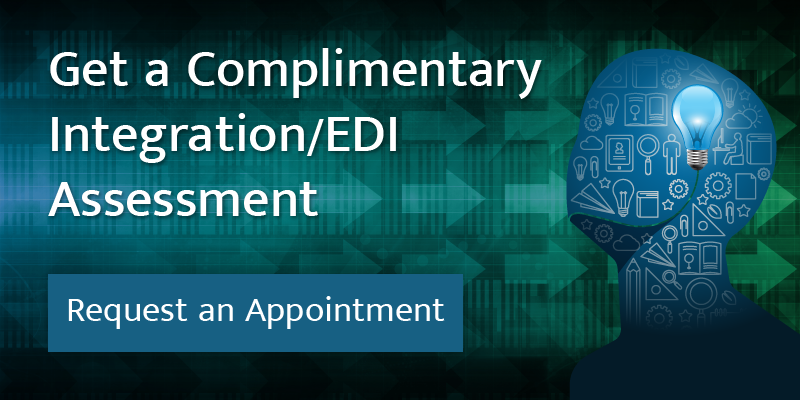Thinkronization Newsletter - October 2011
In this issue, we will explore software currency policy in conjunction with supporting software with overlapping functionality (application rationalization). Specific sections will highlight the impact on decision makers, technical staff and recruitment/human resources personnel. Next month’s edition of Thinkronization will delve even deeper into these important issues.
They are eagerly anticipated and hyped in the technical media. The latest and greatest software upgrades promise to be newer, faster and better. Upgrades can be costly to implement and present numerous staffing and architectural challenges. Will the newer versions work with your existing infrastructure? Will you need to hire staff to support the upgrade? Can you continue to operate with outdated software that is no longer supported, versus the costs of upgrading to, or replacing with, newer supported versions? What is more cost-effective? Is it a simple upgrade, or a complete overhaul?
Why would software become obsolete?
- Newer versions are released fixing bugs and offering enhanced functionality
- Older software is discontinued, phased out or no longer supported
- Staff new to your organization are not trained on older software
“Staying Current” And Supporting Systems With Overlapping Functionality, Issues That Often Confront IT Decision Makers
As IT continues to evolve at warp speed, it is imperative to keep the department working at peak efficiency. Upgrades can be costly and can result in downtime, but can also offer features that help your organization be more effective and efficient. So what happens when your software version(s) is no longer supported by the manufacturer? Companies continuing to operate unsupported software may save money in the short-term but open themselves to a risky business scenario, particularly when running mission critical ERP, EDI, B2Bi, and MFT applications that are past End of Fix, End of Support, and End of Life time periods.What are risks and costs of using unsupported software?
- Operational failure
- Loss of functionality or flexibility of product
- Legal and regulatory issues
- Security vulnerabilities
- Difficulty integrating with other systems
- Increased support issues
- Breaches of contract
- Service Level Agreement issues
How do redundant systems come about anyway? Often clients implement replacement systems with new initiatives being first in line. They have the best intentions of converting processing from old legacy systems to the new systems as time and budget permit. And in more than a few instances this conversion just never takes place. The result, system redundancy and overlaps in functionality.
What is the next step in the process? Companies spend countless IT dollars to develop plans to upgrade, consolidate or rationalize their integration environment. Remedi Electronic Commerce Group provides complimentary assessments to assist with project planning and budgeting related to B2B and MFT software upgrades and consolidation. Our upfront plan projects an estimate of time, resources and monetary effort to upgrade/consolidate to a new environment.
For more information about this offer, click here.
For The Technician… Case Study: Company Acquisition Requires Merger Of EDI Environments
Our case study focuses on a software consolidation project brought about by our client’s purchase of another company.Client Challenge
Both companies had an EDI environment. Our task was to offer upgrade and conversion assistance to de-duplicate environments and retire outdated/redundant software and hardware. In this scenario, the client wished to retire the Inovis translator.
Our Solution
Our solution was to combine and convert the Inovis and Gentran iSeries systems into a unified and upgraded Gentran iSeries environment. Our tasks included:
- Documenting the number/types of EDI maps & partners on the Inovis system to be ported to the Gentran environment
- Documenting the connectivity method (VAN, AS2, direct connection) by partner, result...new connectivity (if any), required in the Gentran environment
- Documenting any communications consolidation opportunities
- Documenting common trading partners on each system and opportunity to consolidate trading partner database entries
- Identifying and documenting systems that feed the EDI environment
- Identifying and documenting intra-company EDI sent between Inovis and Gentran
- Identifying opportunities for map consolidation
- Identifying and documenting intra-division EDI sent between applications in the Inovis/Premenos environment that would need to be ported to Gentran
- Identifying Gentran training needs for EDI resources
- Execute consolidation mapping and communications plan with effort being transparent to trading partners
- Reduction in number of EDI translators across the corporation
- Reduction in annual software maintenance fees for EDI translators by the amount of Inovis maintenance
- Reduction in hardware and storage needs via the elimination of an EDI translator
- Reduction in VAN accounts and fees
- Economies of scale in EDI resource efficiencies company-wide
Conversion Partners Bridge Gaps Between Old And New
All too often, companies do not have the financial or staffing resources to spend on an upgrade. Instead, they may limp along until something breaks. You can plan for an upgrade, but you can NOT plan for system breakages or failures. When pushed to the point where systems fail, a company experiences additional downtime, more staffing hours and unplanned expenses.A business and data integration services firm, such as Remedi, can streamline staffing issues, providing training and/or placement of IT professionals who can assist with the conversion or maintenance of two or more systems and the different skill sets that go along with each.
When an older system fails, an internal conversion may be too little, too late. This is when a professional services firm likeRemedi can work as a conversion partner.Remedi can analyze the current architecture and make recommendations for software currency and system elimination. We maintain a large pool of IT professionals with diverse skill sets. We also offer training to bring a company’s internal staff up to speed on major conversions or upgrades. Remedi can provide short- or long-term contract personnel to ease the conversion process.
For more information about our conversion options or assistance with scoping your next project, click here.



